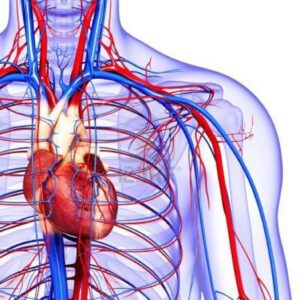
Vascular diseases encompass disorders that occur in the body’s arterial and venous systems. For healthy blood circulation, blood vessels need to be open and flexible. However, in some cases, damage, narrowing, or blockage occurs in the vessel walls. These conditions disrupt blood flow, preventing adequate oxygenation of organs and tissues. These diseases, which usually progress slowly, can lead to stroke, tissue loss, or life-threatening complications if not diagnosed early.
Most Common Vascular Diseases
1. Varicose Veins
Occurs when veins dilate and lose their function. Usually seen in the legs. Although it may seem like an aesthetic problem, it can cause complaints such as pain, cramps, swelling, and skin discoloration.
2. Deep Vein Thrombosis (DVT)
Blood clots that form in deep veins. Most commonly seen in the legs. If this clot breaks off and reaches the lungs, it can develop into life-threatening pulmonary embolism.
3. Peripheral Artery Disease (Leg Artery Blockage)
Occurs due to narrowing or blockage in the leg arteries. It can manifest with pain while walking, coldness in the feet, and non-healing wounds.
4. Carotid Artery Blockage
Occurs due to narrowing or blockage in the carotid arteries that supply blood to the brain. It carries a risk of stroke as blood flow to the brain is reduced.
Causes of Vascular Diseases
Generally, arterial and venous diseases occur due to different causes.
Venous Diseases
- Genetic predisposition
- Standing in a fixed position for long periods
- Prolonged bed rest
Arterial Diseases
- High blood pressure
- Smoking
- High cholesterol
- Sedentary lifestyle
- Genetic predisposition
- Obesity
- Diabetes
- Hormone therapies or birth control pills
These factors can cause damage to vessel walls, blood clotting, and narrowing of blood vessels.
What Are the Symptoms?
- Pain or fatigue in the legs
- Swelling
- Numbness
- Skin discoloration
- Non-healing open wounds
- Chest pain
- Sudden shortness of breath
- Dizziness or loss of consciousness (in carotid artery blockage)
Symptoms may vary depending on the type of disease. Therefore, it’s important to consult a doctor in the early stages.
Diagnostic Methods for Vascular Diseases
- Doppler ultrasonography
- Computed tomography (CT) angiography
- Magnetic resonance angiography (MRA)
- Intravascular angiography
- Blood tests
Diagnostic methods may vary depending on the location, severity, and type of the disease.
Treatment Methods
- Lifestyle changes: Quitting smoking, exercise, weight control
- Drug treatments: Blood thinners, cholesterol-lowering medications
- Use of compression stockings
- Endovascular treatments: Balloon angioplasty, stent applications
- Surgical intervention: Bypassing the blocked vessel or removing the clot
The treatment plan is determined based on the type and severity of the disease and the individual’s general health condition.
Vascular diseases can be largely controlled when detected at an early stage. Regular check-ups, a healthy lifestyle, and avoiding risk factors play an important role in preventing the development of these diseases. When suspicious symptoms are noticed, it’s necessary to consult a cardiovascular surgeon without delay.
